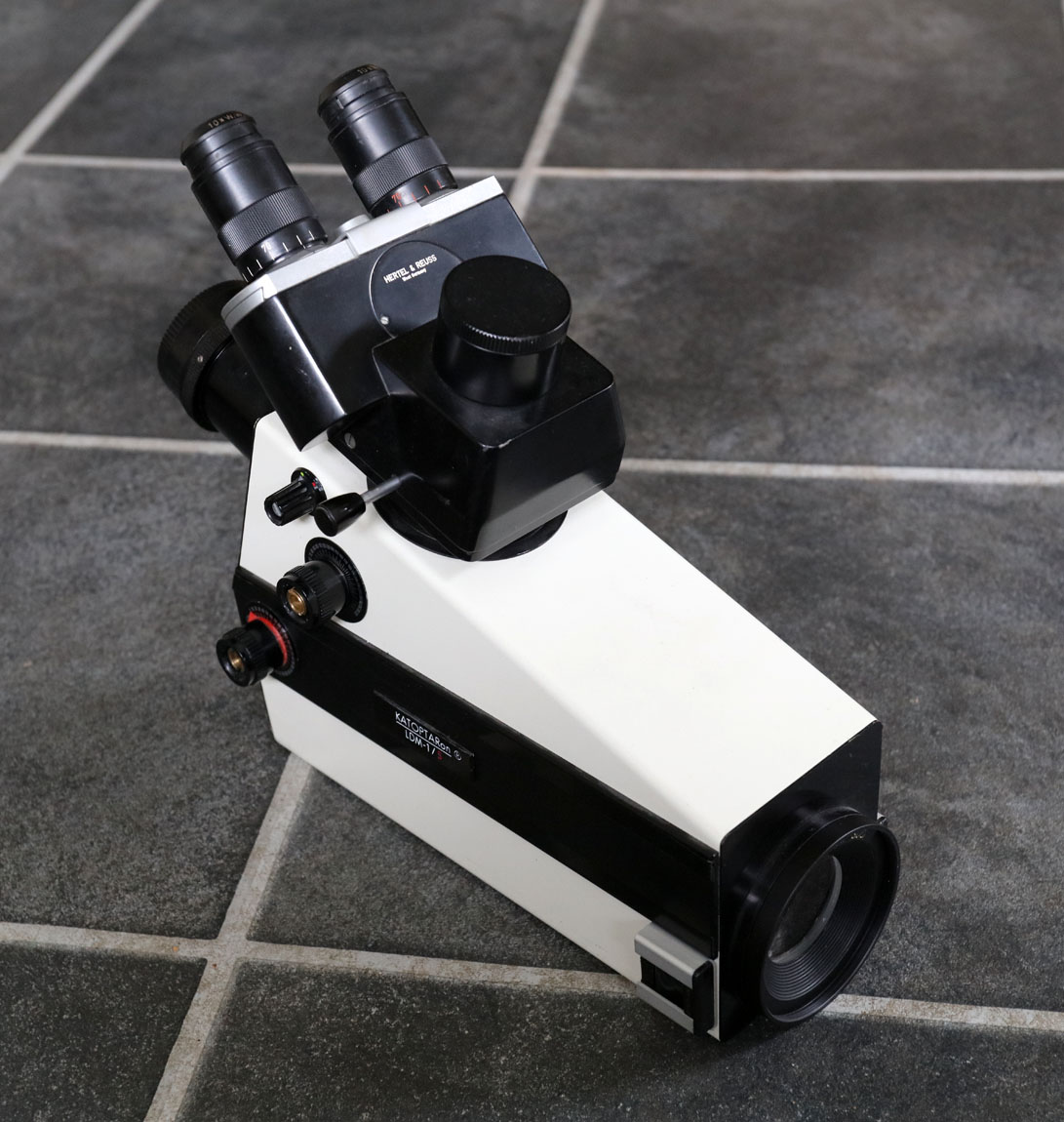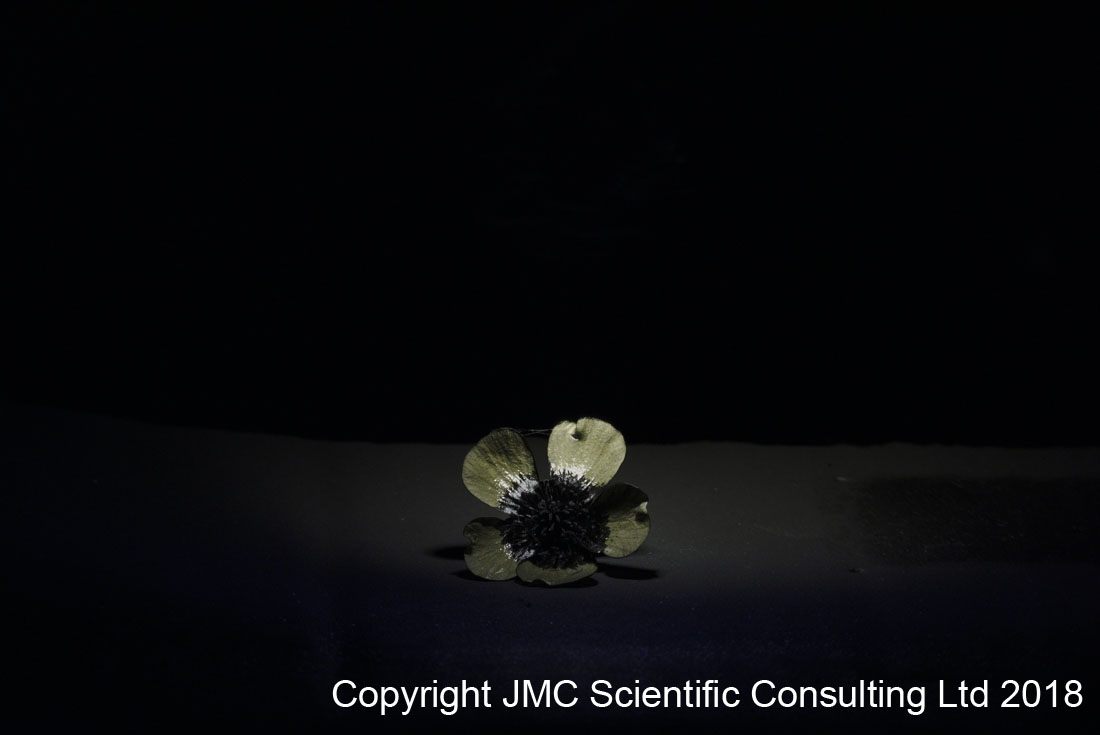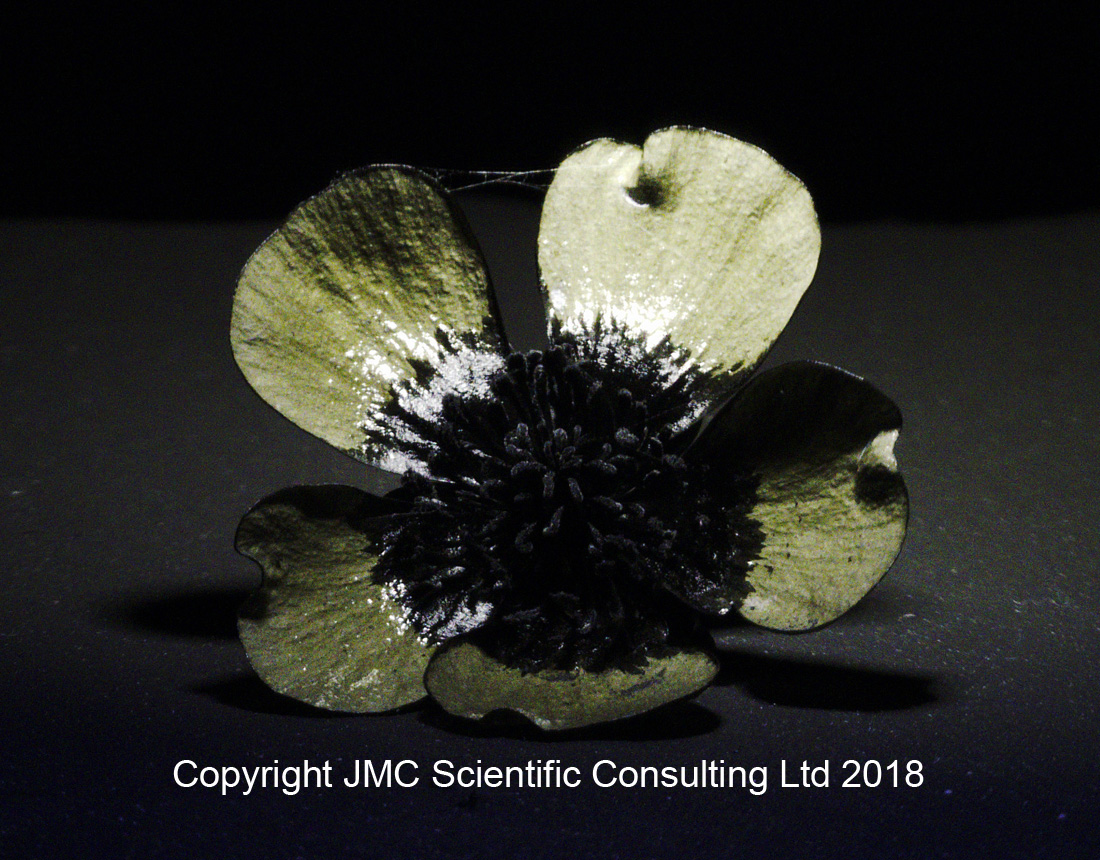“Make sure you have the right tool for the job”….. I’ve heard that often enough, and used it myself plenty of times. When it comes to choosing equipment for photographic imaging, the right tool for the job can make the difference between success and failure. Choice of camera, lens, filter and light source all have an impact on how you capture the image, and whether or not you achieve the result you need. This lens really does fill a specific roll that cannot be acheived any other way – long distance microscopy. The Katoptaron LDM-1/s is a long distance microscope based on a catoptric design – mirrors only and no lenses. It was made by a genius lens designer Helmut Makowsky, and apparently when they were new 20 years ago sold for around $8500. With a focal length of 800mm and an adjustable aperture (normally impossible with mirror lenses, Makowsky’s amazing z-shaped off axis optical design allowed him to adjust the f stop of these types of lenses), and ability to focus from infinity down to a few inches, makes this a very powerful optical tool.
Enough of the background information, here is a picture of the lens.
The camera attaches to the extension tube on the left of the lens in the image above. So what is it capable of? My main area of research at the moment is UV photography. It is remarkably hard to get good UV images, as not only do the cameras need modifying, but lenses tend to strongly absorb UV, especially at shorter wavelengths. This is where the construction of the Katoptaron comes into its own – being a mirror only construction it is capable of imaging from well into the UV (from 180nm!!!) through to the IR, as there is no glass to absorb the UV.
As a test for UV imaging, I often use a Buttercup, as it shows up a distinctive black center in a UV photo. The image below was taken at a distance of 2 meters between the end of the lens and the subject, and is the full frame captured by the camera (a Nikon d810 modified for UV imaging by Advanced Camera Services in the UK), and illumination was by using a single 365nm LED.
Remember this is at 2 meters from the front of the lens to the Buttercup. Just how sharp is it? Well the image below is a crop of the one above, just to show the Buttercup and a little bit of the surrounding.
The resolution has been dropped slightly for sharing online, but as you can see the lens is plenty sharp enough. Between the top two petals are a couple of strands of spider silk (and I keep coming back to this, but this was imaged with the flower 2 meters from the front of the lens). The middle of the flower shows the characteristic black colouration, and the detail at this distance is remarkable. As a couple of my colleagues have pointed out, this would work better with a better UV light source, and that is something I will be working on in the future.
Long distance microscopes enable the photographer to work at a good distance from the subject which can be useful when dealing with dangerous environments (one of the original uses for this one was image high temperature plasma inside reactors). While this one is no longer made, an excellent range of long distance microscopes is currently manufactured by Infinity Photo-Optical in the US.
If you want to know more about how this or my other imaging and measurement capability can help your work, please contact me through my Contacts page.



